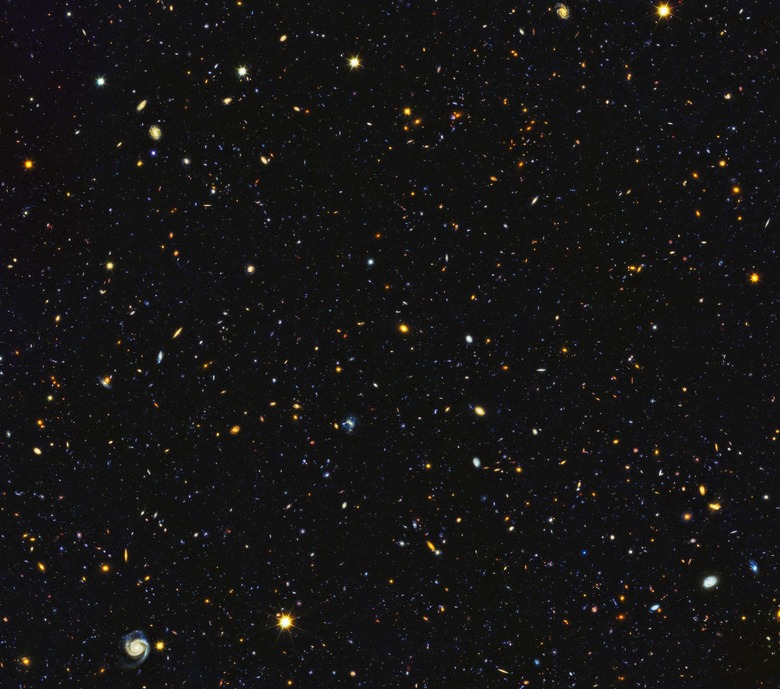This epic NASA photo of star births spans 11 billion years
As group photos go, NASA's latest snapshot of 15,000 galaxies across the universe has to be one of the biggest, with the epic image spanning not only distance but time, too. Captured using the Hubble Space Telescope, the new photo is dominated by forming stars: newly blooming points of light that stud freshly-created galaxies.
It's no easy photo to take, mind. NASA used Hubble's ultraviolet camera to capture the groundbreaking image, combining the data from that with infrared and visible-light data. Together, it forms one of the most comprehensive views of the universe to-date, and something you simply couldn't see with the naked eye.
That's because different galactic ages are represented with different types of light. The most distant galaxies are now only seen in the infrared spectrum. That light started out as ultraviolet, but as the universe expands it was shifted into the infrared wavelengths instead.

Closer galaxies, meanwhile, can be seen across a broader spectrum. However, Earth's atmosphere filters out most of the ultraviolet light, and so Hubble – which is positioned in space, past that filter – is needed to get a comprehensive view.
The result is an image that transcends time and space. The oldest stars in the photo are believed to date back to as many as 11 billion years ago, just three billion years or so after the Big Bang and the creation of the universe itself as we know it. Roughly 12,000 of the stars in the picture are in their formative stages.
"By comparing images of star formation in the distant and nearby universe," NASA explains, "astronomers glean a better understanding of how nearby galaxies grew from small clumps of hot, young stars long ago." The mosaic image is 14 times the area of the Hubble Ultra Violet Ultra Deep Field, which was released back in 2014.
It's the handiwork of the Hubble Deep UV (HDUV) Legacy Survey, with the photo showing a portion of the GOODS-North field, located in the northern constellation Ursa Major. Scientists at the University of Geneva and the University of New South Wales collaborated with NASA and the European Space Agency (ESA) to piece together the various data sources.
